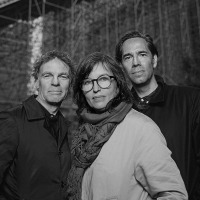After the first congress in 2010, with the topic 'Architecture: More for Less', the second in 2012, under the title 'Architecture: the common', and the third in 2014, entitled 'Necessary Architecture', this year the Foundation wants to adress the situation that is going to face architecture from now on, on the one hand the transformation in attitudes and processes, and on the other, the urgencies of climate change that make it necessary to rethink how to build buildings and cities: the architecture changes to change the world.
For all this, it is an event of great interest at the end of this course, not to mention that certainly there is no other event since the last Venice Biennale that brings together so many architectural figures of the Star System. However, and especially after knowing the title of the conference, we have missed the presence of emerging studies that also present proposals to important challenges such as climate change or the economical crisis and that can bring a more actual view on the reality of the profession.
Anyway, there is no doubt that this IV International Congress of Architecture promises to be a great success.
More information below.-
http://arquitecturaysociedad.org/_congreso-arquitectura-cambio-de-clima/...
PROGRAM
June 29 - July 1, 2016
Pamplona, Palacio Baluarte
June 29th
June 29th, morning
Introduction: Climate Change
Rem Koolhaas (OMA), Rotterdam
Pierre de Meuron (Herzog & de Meuron), Basel
Relator: Richard Ingersoll, Florence
Kjetil Traedal Thorsen (Snøhetta), Oslo and New York
Jean-Philippe Vassal (Lacaton & Vassal), Paris
Relator: Llàtzer Moix, Barcelona
Awards presentation
June 30th
June 30th, morning
Aesthetics of Energy
I. Ábalos y R. Sentkiewicz (AS+), Cambridge and Madrid
Louisa Hutton (Sauerbruch Hutton), Berliin
Relator: Antonio Lucas, Madrid
Awards presentation
Dietmar Eberle (Baumschlager Eberle), Lustenau
Winy Maas (MVRDV), Rotterdam
Bjarke Ingels (BIG), Copenhagen and New York
Relators:
Peter Buchanan, London
Vicente Verdú, Madrid
Fundación Arquitectura y Sociedad
The Fundación Arquitectura y Sociedad is a private non-profit cultural endeavor with a public national and international reach. It was created in 2008 thanks to the initiative of the architect Francisco Mangado and his interest in promoting architecture as a field indissolubly linked to life and society.
The Foundation goes by the conviction that architecture is called upon to address the problems that afflict the complex social fabric, and provide solutions by interacting with other disciplines. It understands architecture as a service that should bind together, condition, and facilitate the life of citizens. Hence, the Foundation seeks to bring together the knowledge and know-how of all fields concerned with the great challenges of our times.









































